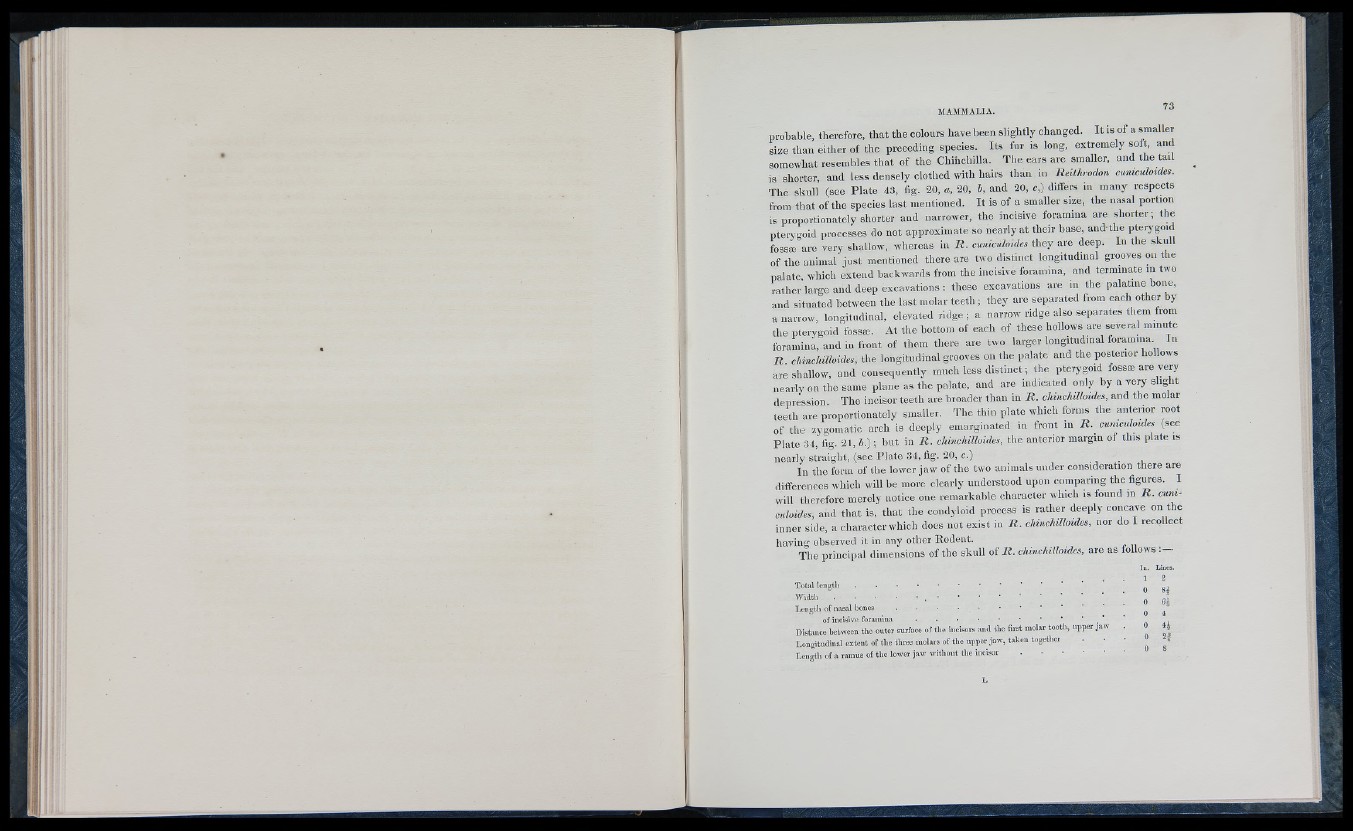
probable, therefore, that the colours have been slightly changed. It is of a smaller
size than either of the preceding species. Its fur is long, extremely soft, and
somewhat resembles that of the Chihohilla. The ears are smaller, and the tail
is shorter and less densely clothed with hairs than in Reithrodon cnniculoides.
The skull (see Plate 4.3, fig. 20, a, 20, h, and 20, c,) differs in many respects
from that of the species last mentioned. It is of a smaller size, the nasal portion
is proportionately shorter and narrower, the incisive foramina are shorter; the
pterygoid processes do not approximate so nearly at their base, and the pterygoid
fossEE are very shallow, whereas in R . amicnloides they are deep. In the skull
of the animal just mentioned there are two distinct longitudinal grooves on the
palate, which extend backwards from the incisive foramina, and terminate in two
rather large and deep excavations : these excavations are in the palatine hone,
and situated between the last molar teeth ; they are separated from each other by
a narrow, longitudinal, elevated ridge; a n a r r o w r i d g e also separates them from
the pterygoid fossæ. At the bottom of each of these hollows are several minute
foramina, and in front of them there are two larger longitudinal foramin^a In
R chinchilloides, the longitiulinal grooves on the palate and the posterior hollows
are shallow, and consequently much less distinct ; the pterygoid fossæ are very
nearly on the same plane as the palate, and are indicated only by a very slight
depression The incisor teeth are broader than in U . chinchilloides, and the molar
teeth are proportionately smaller. The thin plate which forms the anterior root
of the zygomatic arch is deeply emarginated in front in R . cumadoides (see
Plate ,34, fig. 21, hâ) ; hut in R . chinchilloides, the anterior margin of tins plate is
nearly straight, (see Plate 34, In the form of the lower jafiwg. o2f0 t, hce.) two animals under consid, erati■ on t.here are
differences which will he more clearly understood upon comparing the figures. I
will ttierefore merely notice one remarkable character which is found in R . cum-
cnloides, and that is. that the condyloid process is rather deeply concave on the
inner side, a character which does not exist in R . chmclnllotdes, nor do I lecollect
having observed it in any other Rodent.
The principal dimensions of the skull of R . chinchilloides, are as follows
Total l e n g t h ................................................................................................................................
W i d t h ........................................., ...........................................................................................
Length of nasal b o n e s ...........................................................................................................
of incisive f o r a m i n a ......................................................................................
Distance between the outer surface of the incisors and the first molar tooth, upper jaw
Longitudinal extent of the three molars of tlie upper jaw, taken together
Length of a ramus of the lower jaw without the i n c i s o r ...........................................
Iq. Lines.
1 2 0 H
0 64
0 4 0 4|
0 2 f
0 8